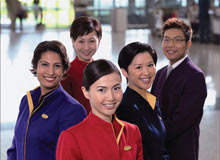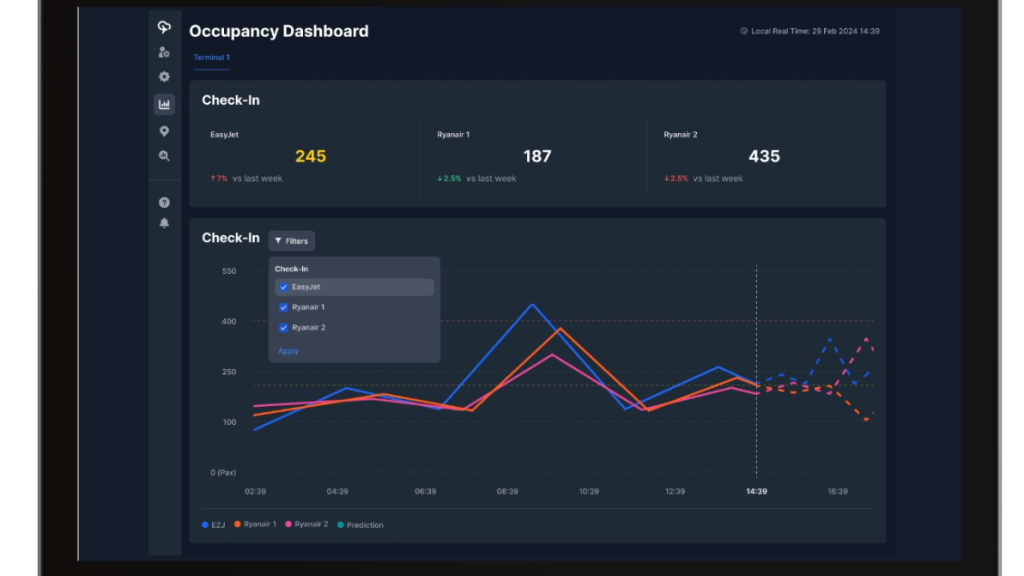
In June 2005, Cathay Pacific announced that it would be replacing its current crew control mainframe system with a sophisticated software solution. Developed in conjunction with Fujitsu Honk Kong, the airline said that its new program would enhance decision support capability and improve the speed and accuracy of its crew tracking.
However, despite initially forecasting that the program would be launched this year, just in time for the airline’s 60th birthday celebrations, Cathay Pacific now expects final implementation to take place in early 2007.
A DRAWN-OUT PROCESS
The delay does not seem to have caused Cathay Pacific’s manager of integrated crew management, Chris Hoyland, too much concern. With over 30 years’ experience in airline operations, he is not a man to be unduly flustered. Any interruption should be minimal.
"A detailed design process for the large amount of company-specific functionality and customisation required began in early 2005 and development started midway through the same year," explains Hoyland. "Initial end-user familiarisation has already begun and the straightforward, intuitive nature of the system means that the training process should be relatively short."
See Also:
It is too late in the day to lose faith now. The commission for crew control system (CCS) development was the result of a lengthy research and ‘request for proposal’ process. Cathay Pacific had to fully research all the main, commercially available products before it was ready to compile a shortlist of vendors.
How well do you really know your competitors?
Access the most comprehensive Company Profiles on the market, powered by GlobalData. Save hours of research. Gain competitive edge.

Thank you!
Your download email will arrive shortly
Not ready to buy yet? Download a free sample
We are confident about the unique quality of our Company Profiles. However, we want you to make the most beneficial decision for your business, so we offer a free sample that you can download by submitting the below form
By GlobalDataThe airline then invited each of the firms to make a presentation and demonstration, on top of their initial written proposals.
The final selection was aided by the use of a complex matrix scoring system, grading each vendor for quality, completeness, level of fit and cost. It took over a year to evaluate the systems on offer. After all that, one can appreciate why a slight delay might seem tolerable.
WORTH THE WAIT
Hoyland certainly believes that the UNIX-based solution will have been worth the wait. The frequent long-haul flights across time zones, coupled with the airline’s basing policy, makes efficient crew management under current flight travel limitations increasingly difficult.
"For years we have used an in-house, text-based mainframe system," explains Hoyland. "But ongoing expansion – as well as the increasing complexity of rules, both legal and industrial – has highlighted the need for better, faster and more comprehensive tools to manage this task."
Cathay Pacific has embarked on an extensive fleet expansion programme and should be running 101 wide-body aircraft by the end of the year.
Commitments have also been made to purchase 16 advanced wide-body Boeing 777-300ER aircraft, with purchase rights for 20 more, and to lease three Airbus A330-300s. Such development plans should result in increased staff requirements. Efficient, effective crew management is becoming more of a pressing concern than ever.
The key function of the CCS will be to ensure that all legal, company and industrial rules governing flight crew activities are strictly followed and inadvertent contravention avoided. This is not, however, the main reason for the airline’s decision to overhaul its system.
"We are confident that our present setup enables us to be 100% compliant with the necessary regulations," explains Hoyland, "but not always in the most timely or efficient way."
ADDED BENEFITS
Putting existing resources to better use through increased efficiency and better decision support has proved far more of a catalyst than regulatory requirements. Besides the obvious benefits of cutting down on manual data input and reducing intervention due to automated data capture and manipulation, Hoyland is excited by further opportunities that the software has to offer.
"We anticipate considerable benefits from more comprehensive rule-checking ability and ‘what if ‘ modelling," he says. "Ultimately, we can make more timely decisions through the graphical user interface presentation of information and decision support functionality. The system will promote better communication of necessary information both within crew control and with other departments."
There are a number of features and tools that Hoyland sees as being of great potential benefit: "A prime requisite of the replacement system was the ‘drag and drop’ graphical manipulation of light and crew pattern data to replace our existing text only tools."
He cites other useful innovations, such as the provision of real-time management reporting, enhanced filtering and sorting tools, and decision support for such tasks as best standby selection.
Cathay Pacific’s specially customised version allows for the complete automation of its crew allowance payment and will include advanced crew training management functionality.
HUGE INVESTMENT
Such technical jargon might seem rather incomprehensible, but Hoyland also describes the benefits of the UNIX-based solution in a language understood by all: money. He refuses to give a precise dollar value of the contract with Fujitsu Hong Kong, but concedes that ‘it is a large investment by any measure’. In terms of cash and resource involvement, this certainly ranks as one of the largest ever software instalments within Cathay Pacific.
Beyond the short-term expenditure, Hoyland says the investment will save costs and help generate revenue. Reductions in crew cost, resulting from better standby management and fewer crew-related delays, should reap instant rewards and the new software can also help keep additional outlays down.
"The expected increase in efficiency will allow rationalisation of the crew control manning levels and minimise the number of additional staff required," explains Hoyland. "Additional savings are expected from system maintenance and change implementation simplification."
DESIGNED TO BE FLEXIBLE
Eras of growth often usher in periods of uncertainty, and operations and focus can shift accordingly. It is therefore essential that the new system can adapt to any changes in requirements. As part of the project, a great deal of time and effort has been spent on making the system as future proof as possible. It has been designed to be extremely flexible.
"Wherever practical, rule and system settings are parameterised and user configurable," explains Hoyland. "The concept of user configurable masks, and filters for use in rules, makes it possible to create new rules for different groups of crew as required."
Hoyland is certainly keeping one eye on the future. Running concurrently with the crew control project, a separate initiative is underway to enhance and upgrade the crew rostering system. Further augmentation is also planned for the airline’s pattern optimiser and crew communication systems, with a new project to fully automate training reporting and tracking starting shortly.
Cathay Pacific will have to celebrate its 60th birthday without its new CCS system up and running, but it should be a present worth waiting for.




